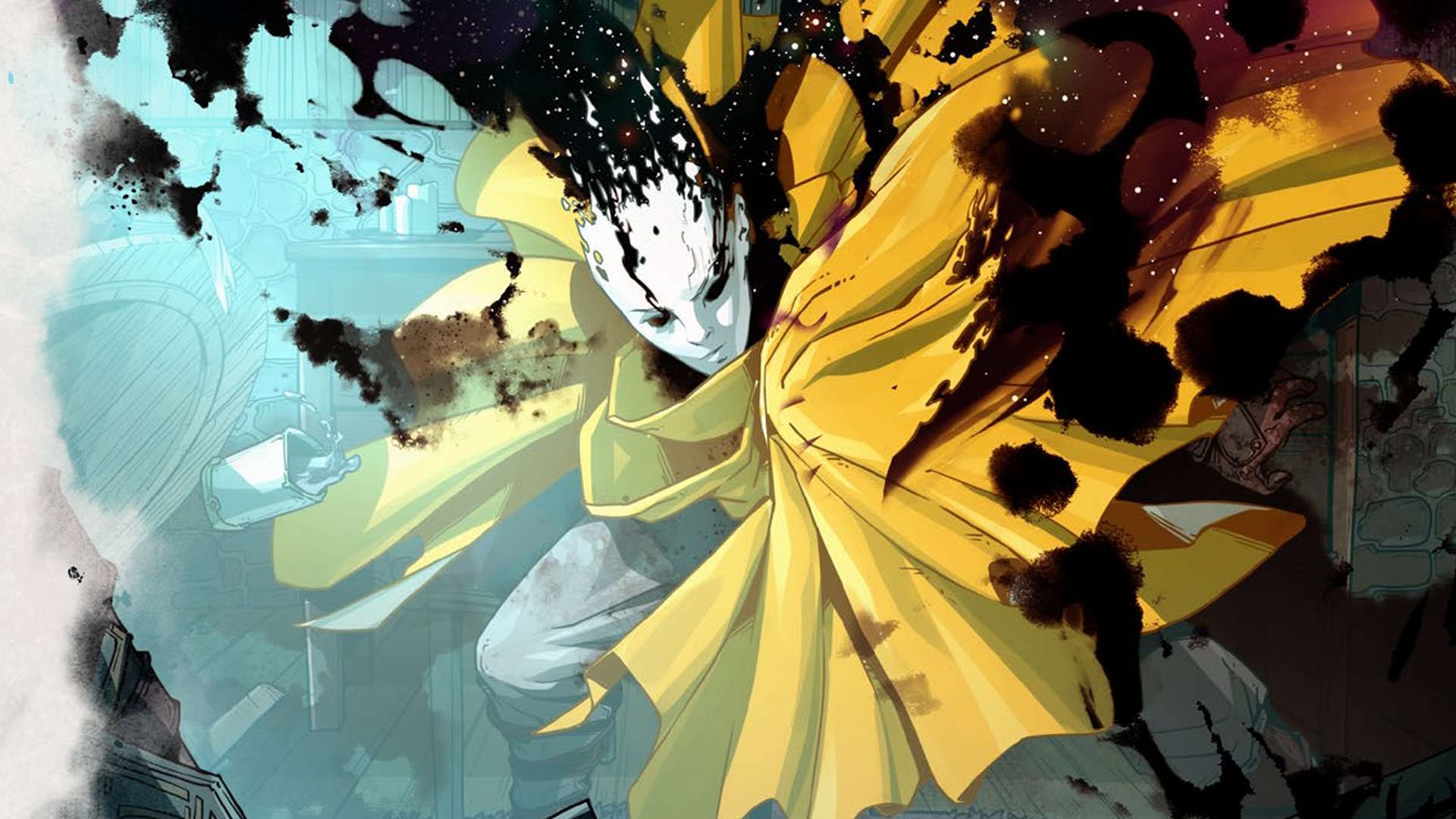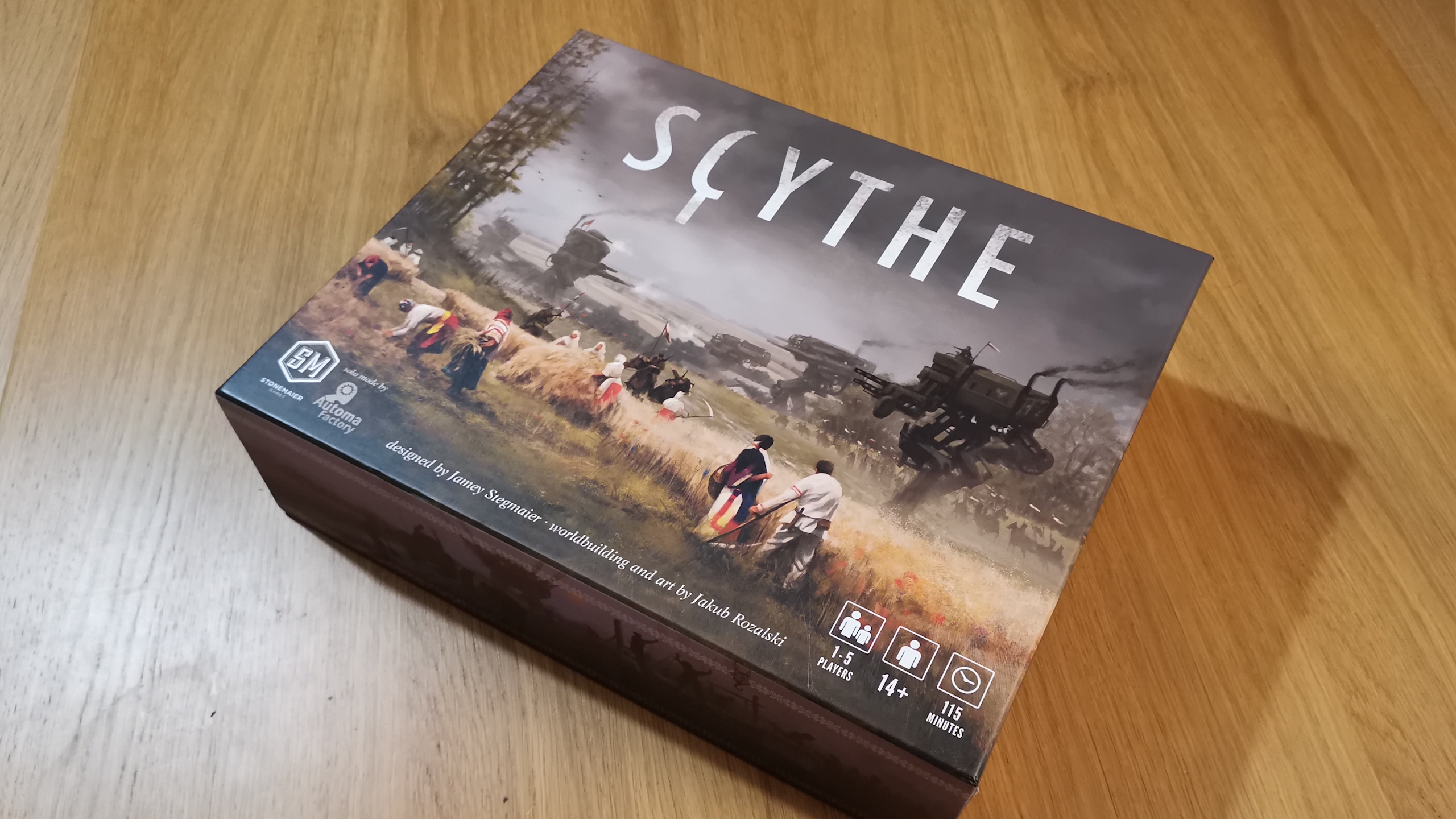GamesRadar+ Verdict
Legend in the Mist's Tag-based system offers intense moments of character growth, putting incredible flourishes on press-your-luck mechanics to incentivise tough decisions that propel story arcs in inspired ways. At first glance Legend in the Mist's system may seem arduous but, while it is a little unintuitive for anyone coming from a D&D background, it mitigates this with stellar examples and a solo walkthrough that are well worth your time if seeking epic tales of ordinary folk.
Pros
- +
Tag system is very narrative friendly
- +
Free creative expression through wordplay
- +
Inspired character creation and advancement
- +
Solo mode and choose-your-own-adventure intro
Cons
- -
Challenging for newbies and rule sticklers
- -
Tracked challenge turns can be slow
- -
Takes a lot of prep and on-the-fly rulings
Why you can trust GamesRadar+
Pitched as a "rustic fantasy" tabletop RPG, the Legend in the Mist tabletop game puts the focus on ordinary folk and their ever-shifting skill sets, following a Fellowship of plebs with little knowledge of the Dales at large. Players confront Challenges both ordinary and bizarre in this homespun tale of sacrifice, dark orders, and unnamed phenomena.
Legend in the Mist is based around the Powered by the Apocalypse system, which the Son of Oak designers previously adopted and modified for their popular City in the Mist system. Streamlined further for Legend in the Mist, this Tag-based system becomes all the more entrenched in its narrative heavy roots, with a few convenient simplifications and some exciting changes to note.
Legend in the Mist features & design
Price | |
Ages | 14+ |
System | Powered by the Apocalypse |
Players | 1 - 6 |
Lasts | ~4hrs per session |
Complexity | Moderate |
Designers | Amít Moshe, Eran Aviram, Itamar Karbian, Kelly Black |
Publisher | Son of Oak |
Play if you enjoy | City in the Mist, Blades in the Dark, PbTA systems, Scion, Masks, FATE, Monster of the Week, Dolmenwood, The Witcher |
- Compelling, in-depth character creation and advancement
- Hero Might levels afford equal narrative importance to all PCs
- Super customizable rolls that can be pushed at consequence
Legend in the Mist is a fantasy roleplaying game at its core, so you might think it doesn't stand out much from the best tabletop RPGs. However, that'd be doing it a disservice. It's pitched as a fireside tale about either bog-standard villagers or seasoned adventurers, and this means its characters are made up of descriptors rather than stats. This is a narrative-first game.
Flicking through Legend in the Mist's core book, it's well laid out with all the minutia practically arranged for readability. My only gripe here is that unless you know the game's bespoke terminology well, it can be hard to navigate. Thankfully there's a superb glossary and a lot of help to get you started learning. Plus, the sketchy, dynamic artwork is to die for.
Inside, there are three character creation options. Each one offers a more in-depth approach, from entirely freeform scribblings to pre-written 'Tropes' pointing at multiple choice options, to Themebooks with a full list of prompts to flesh out compelling characters.

No matter what you choose, those characters are made up of four Themes containing Tags, most of which are useful (though some are limiting). Themes might relate to a Skill or Trade, your character's Personality, Circumstance, etc., and can also relate to personal quests. For example, an Artisan Theme might offer an "attention to detail" Power Tag, but also the Weakness Tag "rushed" which the Narrator might call on to impede actions, while its quest might involve designing the finest jewellery.
Players tackle Challenges with a universal roll of two six-sided dice. Working on a sliding scale of success, rolls gain and lose Power as players invoke their Tags, along with temporary Statuses and Story Tags. In trying to overcome a Challenge set by the Narrator, players add up the number of relevant Tags and the Tier of their best condition (such as "Protected-3"), and less any that impede them to get the Power score for that action. Power is then added to the roll as a modifier. It's certainly a narrative focussed concept, as players are constantly justifying their character's actions in relation to their past and beliefs as they suggest relevant Tags.
Weekly digests, tales from the communities you love, and more
If a player succeeds on a tracked Challenge, the Narrator may let them spend Power to gain additional Effects, dramatically changing the outcome of a roll. That might involve slapping a new Tag or Status on an enemy or ally.
Gameplay
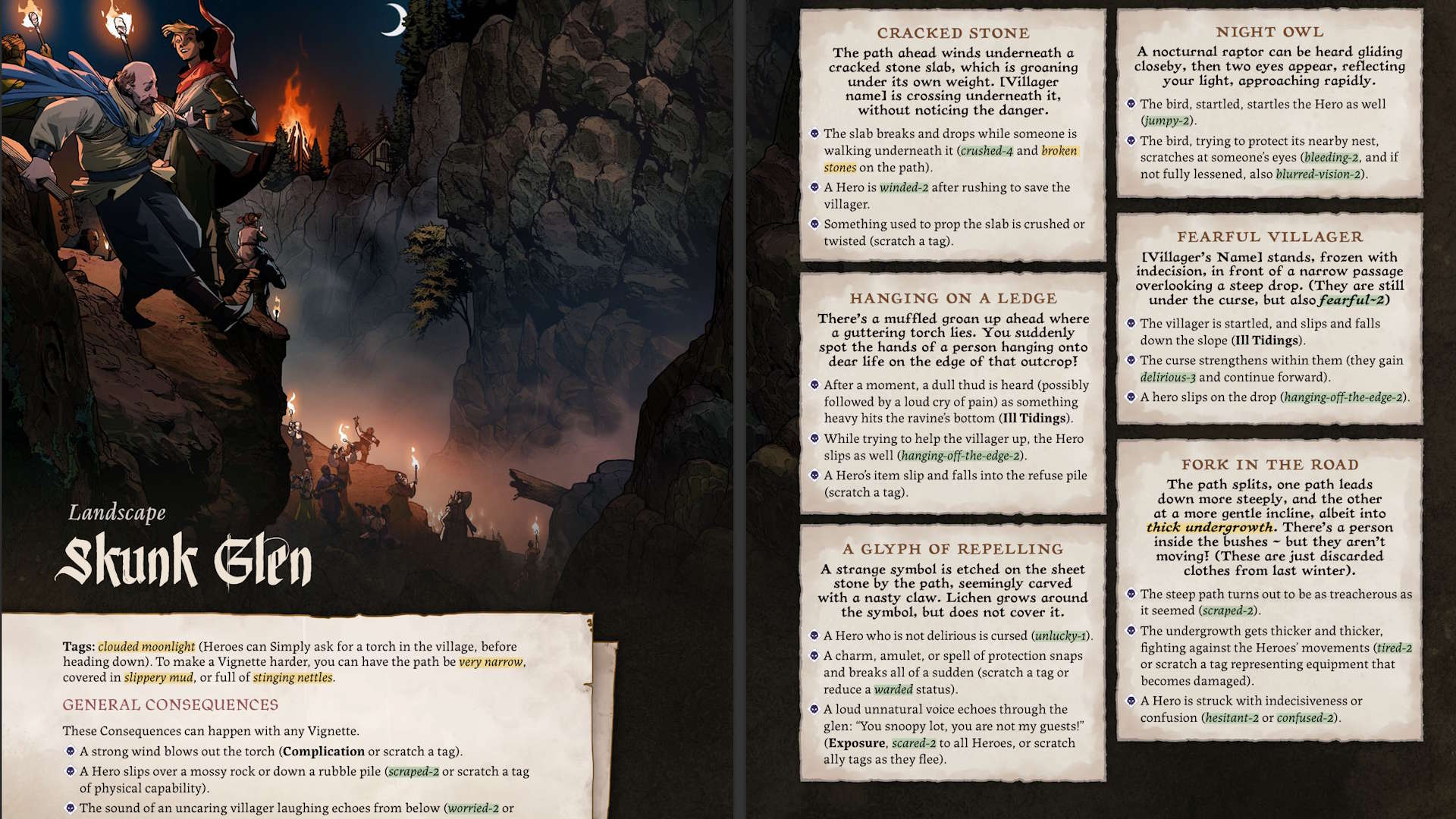
- Learning curve is steep, but solo starter and examples are invaluable
- Creative thinkers will thrive, and lots of walkthroughs for newbies helps
- Piecing together a campaign takes time, but there's plenty of inspiration
For your average TTRPG player, there's a steep learning curve in picking up Legend in the Mist. It takes time to understand exactly what you can do on your turn, what needs to be tracked, and which mechanics affect one another. The somewhat abstract tracking is hard to get your head around, particularly as the lexical nature of the system can lead to inconsistent phrasings.
As an example of that abstract nature, statuses can stack and this allows you to make multiple rolls toward your collective goal. However, Stacking isn't as straightforward as it sounds. It uses a leapfrogging method of marking Tiers, rather than adding them up.
Luckily, it all kind of clicks together in action and makes a lot of sense as a balancing method. I'm a big fan of systems that allow you to push your rolls at a cost, and the ability to burn a Tag or accept a Consequence to gain Power is highly appreciated. It's an inspired way to encourage players to make tough sacrifices through engaging with meaningful mechanics.
Similarly, Characters progress in a few ways: when Quest milestones are reached, or when Weakness Tags are invoked or reflected on. Marking thrice for either sees that Theme evolve, encouraging players to face flaws. Neglecting or acting against a Theme sees you mark Abandon, which has you replace Themes that no longer serve you. It's a great way to avoid players feeling stuck with undesirable character choices.
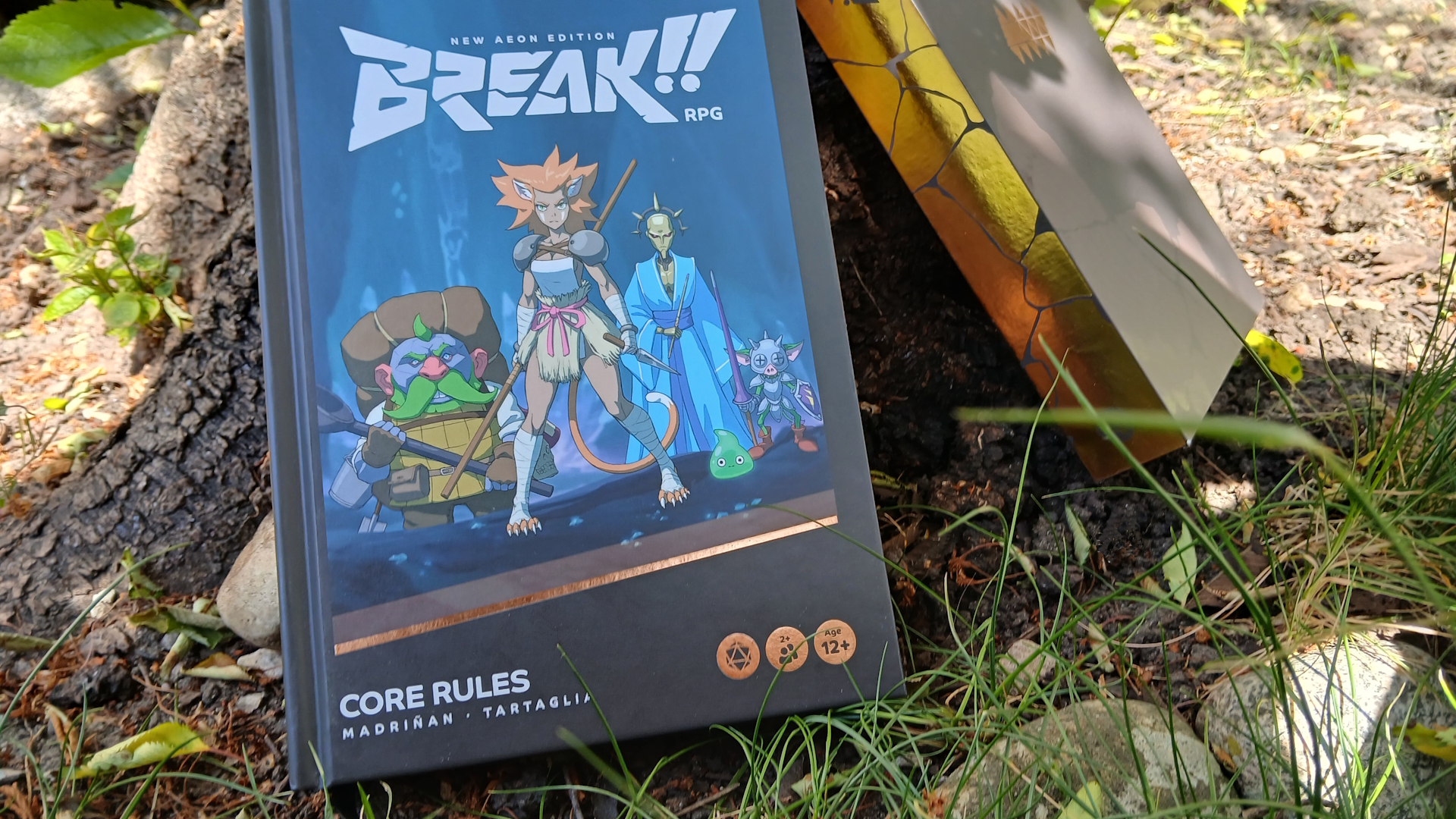
If you want an adventure that strays further from the beaten path, it's worth checking out the anime, Zelda, and Final Fantasy-inspired Break - which we gave four and a half out of five stars in our Break!! review.
This constant evolution extends to conflict too. As characters develop, Themes grow in Might. From Origin, to Adventure, and then to Greatness level, Might increases notoriety but attracts more powerful Challenges. When tackling Challenges of differing Might levels, an action may be Imperilled and its Power reduced. It's one way to balance fights without real stats or concrete character levels and an interesting way to make Might matter mechanically. Just bear in mind that it's yet another element to juggle on top of everything being added to rolls.
Speaking of which, the main pain, aside from getting your head around the system itself, comes in piecing a campaign together for your players. There are plenty of example Challenges and guides to help – alongside full campaign foundations – but with such a high probability of consequences, if you're not on the ball with anticipating them you will end up caught out.
Nevertheless, there are ample player aids to help you along the way. Doling out physical tracking cards for temporary conditions is a fantastic way for tactile learners to engage, for instance.
Meanwhile, the minimal tracking in other areas frees creatives up for thinking outside the box. Though choice paralysis can creep in, watching seasoned tabletop gamers mull over how they can apply their Tags inventively is fascinating. Less narratologically-minded players and TTRPG newbies may need some hand-holding, but the choose-your-own-adventure style solo starter comic is a great way to get a feel for the system.
Should you buy Legend in the Mist?
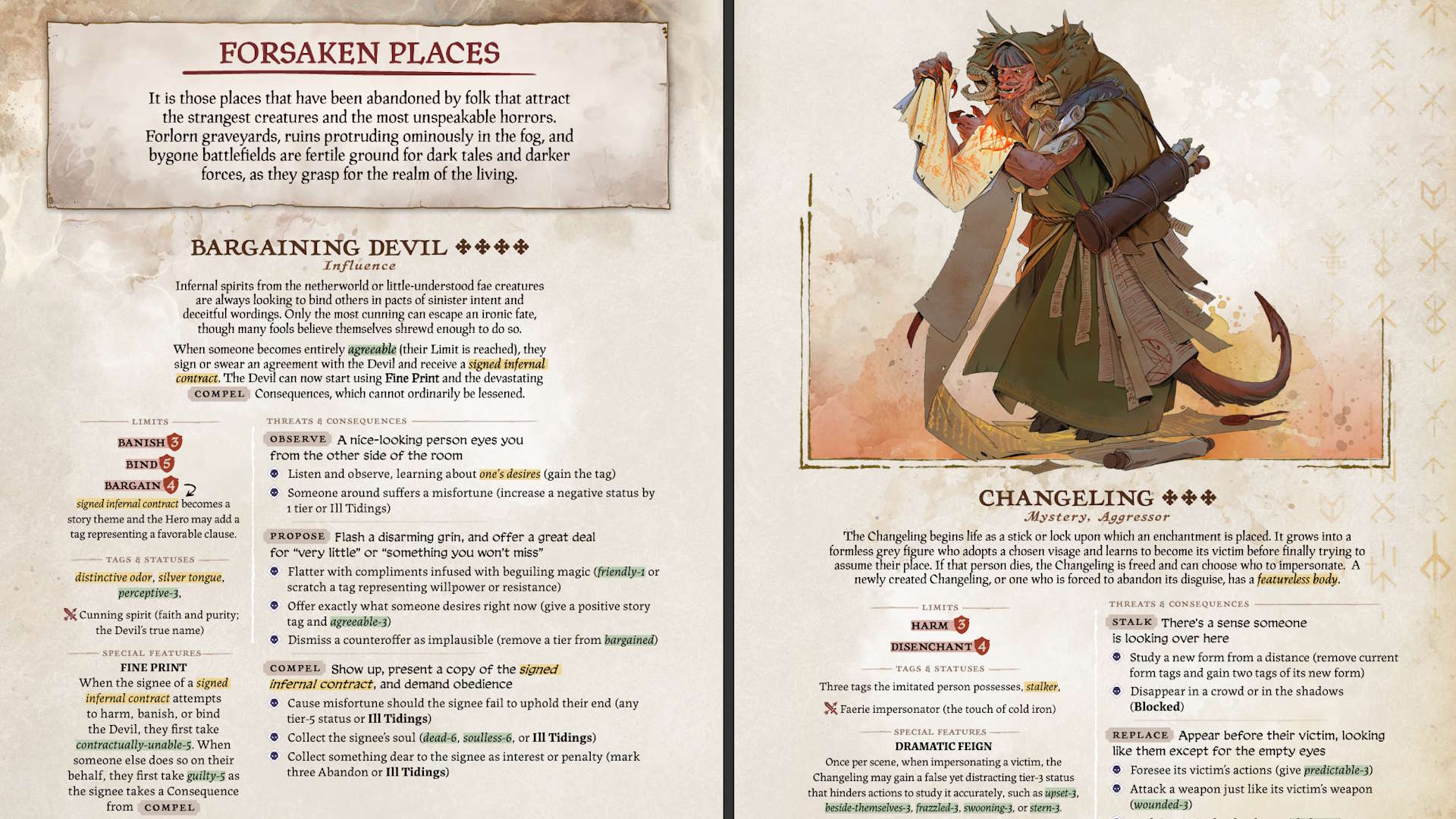
While the system can get a little overcomplicated in places – sometimes stifling the creativity it tries to encourage – the intricate greebles are easily ignored for a lighter game. Since there are myriad approaches to almost everything in the core book, it's hard to find a method this game doesn't cater for in terms of worldbuilding, character design, and playstyles.
There's a big weight on the GM to identify and rule on which Tags can be used in each circumstance, but the impressively customisable lexical crunch makes Legend in the Mist a smashing system for creatives and abstract thinkers. Whether playing or narrating, expect to take on a high mental load at times, especially if players always try to opt for tracked challenges.
Ratings
Category | Notes | Score |
|---|---|---|
Game mechanics | Inspired wordplay and fantastically customizable rolls impress, but put lots of weight on the GM. | 4/5 |
Accessibility | There are several approaches to everything and lots of intro examples, but the system is very verbose which may put some off. | 3/5 |
Replayability | Countless building blocks to combine for different stories every time, though the map is relatively small. | 4/5 |
Setup & pack down | The game's success or failure here will depend on whether you track with a mass of Tag and Theme cards, or copy everything onto one sheet. | 4/5 |
Component quality | Beautiful artwork lend Legend in the Mist a distinct identity. | 4/5 |
Buy it if...
✅ You're the creative sort
You'll need to think abstractly and on your feet, and there's plenty of space to dream up anything you can imagine.
✅ You've a lot of time to spare
With tracked turns taking a long time to play out, and prep involving a lot of piecing together, it takes time to design and work through a campaign.
Don't buy it if...
❌ You're a stickler for specificity of rules
There's very little this game won't allow as long as all players agree it's canon. There will be arguments over application of Tags.
❌ Your table tends to argue over small mechanical details
The game affords a lot, but it can lead to arguments over how applicable each Tag is.
How we tested Legend in the Mist

This review was conducted using a PDF copy of the game provided by the publisher.
After poring over the core rulebook, our reviewer ran sessions of Legend in the Mist to see how it all works practically. They then used that experience to inform this review.
For a full overview of our process, don't miss the GamesRadar+ reviews policy.
Hoping to try something new on game night? Be sure to drop in on the best board games or the best adult board games.

Katie is a freelance writer with over 5 years experience covering everything from tabletop RPGs, to video games and tech. Besides earning a Game Art and Design degree up to Masters level, she is a designer of board games, board game workshop facilitator, and an avid TTRPG Games Master - not to mention a former Hardware Writer over at PC Gamer.
You must confirm your public display name before commenting
Please logout and then login again, you will then be prompted to enter your display name.
